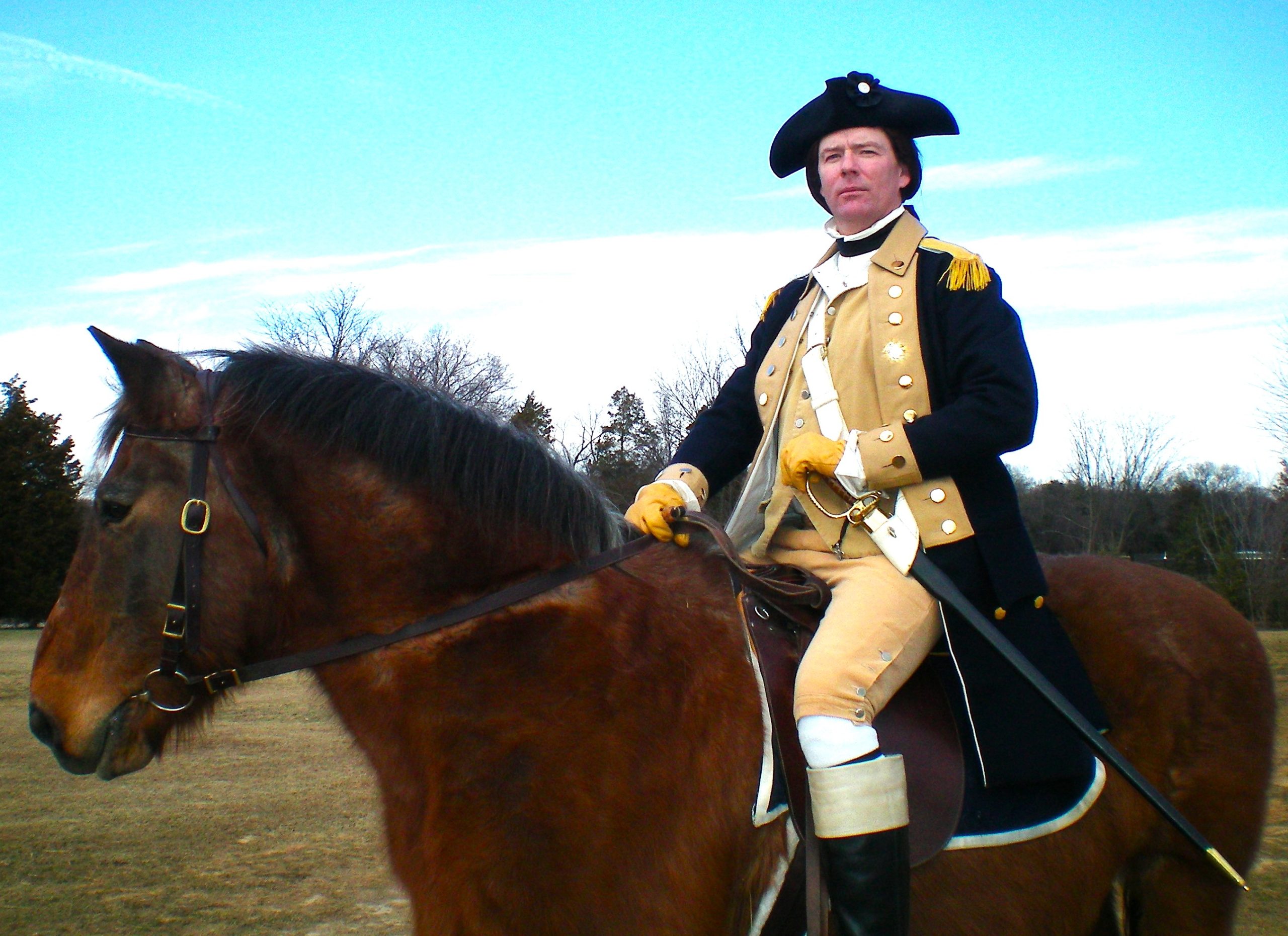
Event details
- Thursday | January 11, 2024
- 7:00 pm - 8:30 pm
- 151 S Church St, Spartanburg, SC 29306
- 864-596-3500
UPDATE:
Due to circumstances beyond our control, this year’s Winter Chautauqua performer will be performing virtually via Zoom. Registrants are still invited to attend the program in-person at the Headquarters Library, where both shows will be live-streamed and where attendees will have the opportunity to interact with our performer.
If you prefer to attend virtually via Zoom, please register in advance:
3:00 pm — https://infodepot-org.zoom.us/meeting/register/tZwpd-igqj8pE9E6t40f-cce6_eJbhma9RcK
7:00 pm — https://infodepot-org.zoom.us/meeting/register/tZcufu2trjIqHtEQmJy7ga2LVa0a_d6PVQpy
Registration required.
Click here to register for the 7pm show.
FREE Admission. Seating is limited.
Events

Mr. Johnston graduated with degrees in Theatre/English from LaGrange College (receiving the Ingrid Bergman Scholarship) and is certified in Historic Interpretation by Colonial Williamsburg Foundation. He has done Museum Theatre/Historic Character Interpretation for Colonial Williamsburg, Mount Vernon, the Smithsonian’s National Archives and National Portrait Gallery, English Heritage-UK, Atlanta History Center, National Civil War Naval Museum, and Northeast Georgia History Center. He is a member of the Screen Actors Guild and has appeared on National Geographic Channel, History Channel, Food Network, PBS, and Cartoon Network’s Adult Swim. He has performed Shakespeare, jousted, and toured with a rock band in North America/Europe.
General Nathanael Greene – Slowly, but Surely Victorious Written by K. Ken Johnston
It seems appropriate to begin this character description of Nathanael Greene with two quotes – ironically not written about him (and indeed, before he had even fully demonstrated his abilities), but perfectly illustrating the fortitude, resiliency, and dedication that would showcase Greene as a paradigm of the quietly brilliant leader. The quotes, both from Thomas Paine’s The American Crisis (1776), are as follows:
“These are the times that try men’s souls: The summer soldier and the sunshine patriot will, in this crisis, shrink from the service of his country; but he that stands it now, deserves the love and thanks of man and woman.”
“Tyranny, like hell, is not easily conquered; yet we have this consolation with us, that the harder the conflict, the more glorious the triumph.”
Written as inspiration in the dark days of late 1776 when the bid for American Independence seemed about to fail, these descriptors of the type of determination needed could rightly be applied to many sung and un-sung Patriots who persevered – and are a perfect apotheosis for the quiet, mainly self-educated, former Quaker Nathanael who would become General Greene; perhaps General George Washington’s steadiest, most dependable officer, respected by fellow soldiers and foes alike, emerging victorious despite long odds and repeated defeats in the crucible of war that was the Southern Theatre during the struggle for American Independence.
Without detracting from Greene’s earlier service under Washington from the Siege of Boston to the Battle of Springfield, and his time as an extremely effective Quartermaster General for the Continental Army, it was his command in the highly adverse Southern Theatre that brought out his personal talents and abilities, made his reputation, and contributed hugely to ultimate victory for the American cause. Selected by Washington for his steadiness and unequaled organizational skills, Greene was a welcome tonic to both the disastrous General Gates whose defeat at Camden had wrecked the Patriot Army in the South and the plucky, but unlucky General Lincoln whose surrender at Charleston took an entire Continental Army off the field.
Arriving in Charlotte NC in December of 1780 to take command, Greene not only displayed his expected patient, thorough organizational skills in recruitment and supply, but also showed an exceptionally shrewd military talent with a willingness to take risks – ignoring conventional military strategy by dividing his forces; he would lead the main American force southeast, while the natural tactical genius General Daniel Morgan would lead a smaller detachment to the southwest. Among the first fruits of this strategy was the smashing success of Morgan over the dashing – and hated – Lieutenant Colonel Banastre Tarleton at the Battle of Cowpens in January of 1781. Displaying another talent often absent in both American and British officers in the conflict, Greene was willing to learn from the tactics used by Morgan at Cowpens for his own confrontation with Tarleton and his commander, General Cornwallis, at the Battle of Guilford Courthouse two months later – resulting in a tactical “victory” that left the British force so badly mauled that the Americans simultaneously won a strategic victory.
This would be the pattern Greene employed for the entirety of his command of the Southern Theatre from 1780 through 1783. He repeatedly gambled: dividing his inferior forces in the face of superior forces, trusting that he would always be able to out-maneuver the slower moving enemy, preserving his forces after a defeat to fight again thus nullifying British victories, bringing his forces together for tactical superiority when necessary, then dispersing for tactical retreats that made supply easier. This was a strategy that resulted in numerous defeats and the occasional victory – including the one that mattered most, winning the war. In contributing to that ultimate result, General Greene can rightly be said to be second only to General Washington himself – not too bad for a quiet, unpretentious, former Quaker.
1742 – Born August 7 in the Colony of Rhode Island and Providence Plantations, British America
1752-1773 – Received tutoring from Scottish schoolmaster, began and continued lifelong self-education, ran family forge, mill, and merchant business endeavors
1774 – Married the charming, spirited, and well-educated Catharine Littlefield
1775-1780 – Served under General Washington in the Siege of Boston, Battle of Harlem Heights, Battle of Fort Washington, Battle of Trenton, Battle of Brandywine, Battle of Germantown, Battle of Monmouth, Battle of Rhode Island, and Battle of Springfield
1778 – Appointed Quartermaster General of the Continental Army
1780 – Appointed as Commander of Continental and Patriot forces in the Southern Theatre of the War for American Independence
1781 – January 17, Battle of Cowpens, overwhelming American victory. March 15, Battle of Guilford Courthouse, both sides damaged – tactical British victory but strategic American victory
1781-1783 – September 8, 1781, Battle of Eutaw Springs, last major engagement of the war in the Carolinas though skirmishes continued, both sides claimed victory. September 3,
1783, Treaty of Paris ends the war with the recognition of the Independence of The United States.
1783-1785 – Resigns commission in the Continental Army. Awarded a plantation by the state of Georgia in recognition for his services. Takes up residence, and though viewing slavery as indefensible, works the plantation with slave labor.
1786 – Died June 19, aged 43, Mulberry Grove, Georgia, United States
“Very true, but you see that I dance strong.” Reply in his youth to a young lady who told him he danced stiffly (recounted in George Greene’s biography of the General, his grandfather).
“Integrity without knowledge is weak and useless, and Knowledge without integrity is dangerous and Dreadful.” 1771 letter to Samuel Ward, Jr.
“Don’t be surprised if my movements don’t correspond with your Ideas of military propriety. War is an intricate business, and people are often saved by ways and means they least look for or expect.” Letter to an officer from North Carolina.
“Col. Tarleton is said to be on his way to pay you a visit. I doubt not but he will have a decent reception and a proper dismission.” Message to General Morgan four days before the Battle of Cowpens.
“We fight, get beat, rise and fight again.” Letter to French ally, the Chevalier de La Luzerne.
Washington’s General: Nathanael Greene and the Triumph of the American Revolution – Terry Golway (2005). A thoroughly readable, well researched one volume account of Greene’s life. As noted historian Joseph J. Ellis, author of His Excellency: George Washington, says “Washington said if he went down in battle, Greene was his choice to succeed him. Read this book and you will understand why.”
Long, Obstinate, and Bloody: The Battle of Guilford Courthouse – Lawrence E. Babits and Joshua B. Howard, eds. (2009). In the first book-length examination of the Guilford Courthouse engagement, Babits and Howard piece together what really happened on the wooded plateau in what is today Greensboro, North Carolina, and illuminate Greene’s military genius.
The Revolutionary War in the Southern Back Bounty – James K. Swisher (2007). Swisher demonstrates in captivating detail how Lord Cornwallis was eventually defeated by a coalition of backwoods militia and Continental regulars under the direction of innovative and confident officers willing to use new combat strategies – Greene paramount among them.
General Nathanael Greene and the American Revolution in the South – Gregory D. Massey and Jim Piecuch, eds. (2012). This collection of essays edited by Massey and Piecuch provides an assessment of the most important period of Greene’s military career from distinguished scholars, and a jointly written introduction demonstrating how Greene’s actions shaped the war in the South.
The Life of Nathanael Greene, Major-General in the Army of the Revolution. 3 vols. – George W. Greene (1867–1871). Written by George Greene, the General’s grandson, this work definitely skews towards hagiography, but has a multitude of intimate anecdotes.
